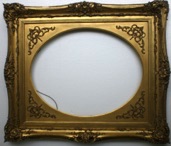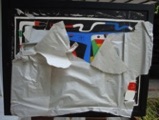
Benaka Art Conservation
Specialist in conservation and restoration of artworks


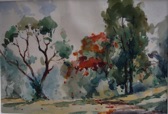
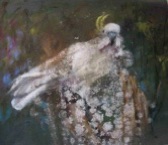
All Enquires :
61002707, 91054377
64 Taman Warna
Chip Bee Gardens
Singapore 276386
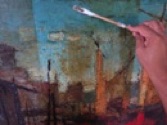

What makes paintings and works on paper to deteriorate?
The tropical weather in Singapore is known for its fluctuating high temperature and high humidity. Sensitive artworks on paper and canvas paintings can get deteriorated very quickly in the tropical condition, if enough care is not taken. There are mainly three aspects of damages; i.e. physical, chemical and biological. Light, heat, moisture, air pollutants, dust, dirt, insects and biological growth can lead to deterioration of a painting. Works on paper will deteriorate at different rates, depending on when they were made and the materials and techniques that were used.

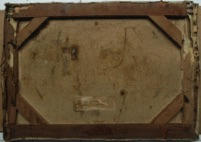
There are some simple preventive measures which can be adopted by you to safeguard your collection. Learn more about preventive conservation
The challenges and factors of deterioration in a tropical climate:
Painting Conservation
Dust & dirt :
These weightless particles are present in the atmosphere, which deposit easily on a paper and settle quickly in the presence of moisture.
The effects of dust and dirt are discoloration, increase in the acidic level of a paper. Dirty places are insect friendly and so the chances of insect attack are higher in the presence of dust & dirt.
Dust contains atmospheric pollution, like, Sulfuric acid; hence acidity occurs in the dust accumulated paper. Acids break the cellulose bond of a paper and leave the paper weakened, which makes the paper more susceptible to moisture. The weakened paper favors fungal growth in the presence of excess moisture and still air. Moisture attracts more dust accumulation and the cycle goes on.
Dust and Heat have a special bond. As hot air rises it carries dust with it. That is the reason why we see dusty atmosphere in the tropics. Thus, an artwork in a tropical climate will experience far more grime or dirt than is normal for the rest of the places.
In old canvas paintings, heavy dust accumulation at the lower part can be so heavy that the canvas starts pulling away from the stretcher at the upper edges.
Dust & dirt can be controlled by taking some easy measures, like keeping the surroundings clean and green. Air conditioning can be very helpful in avoiding dust.
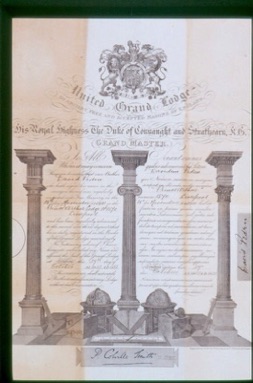
Light:
In a tropical climate sunlight is very intense. Sunlight contains harmful UV rays. If your painting is exposed to the dangerous rays of direct sunlight, very soon you will see the fading of pigments. UV rays can also cause darkening of the varnish layer. Artificial illumination also contains UV rays, unless they have UV buffering, hence they too can cause damage if the exposure time is more.
The most important point is that the damage caused by light is irreversible. Therefore protecting the paintings from harmful UV rays is utmost important.
Temperature:
High temperature can soften paint layer. Dirt and debris are easily trapped in the softened paint and varnish. High temperature can cause brittleness in a paper.
Heat dries out the material of the painting, speeding up the process of natural aging.
Drastic change in the temperature can cause strain on paper or canvas as they expand and contract which eventually causes physical damage.
The optimum temperature is 20 to 25 º Celsius or 60 to 70º Fahrenheit to maintain the stability of the artworks on paper or canvas.
Humidity:
Low or high relative humidity as well as rapid changes in relative humidity is not good for artworks on paper and paintings. Low relative humidity tends to minimize chemical change. However, it also tends to make the paint brittle and prone to mechanical damage. High relative humidity tends to minimize mechanical damage. However, it tends to promote the growth of biological organisms. Mould growth can occur in a paper very easily. It can be disastrous to a paper. It can be seen in the form of black spots in canvas paintings, especially acrylic paintings.
Fluctuating RH is harmful for both canvas and paper artworks. Too much change in relative humidity is especially bad for wooden panel paintings. In response to fluctuations of humidity and the shielding effect of the paint layer on top, the wooden panel has a tendency to slowly form a concave shape, which ultimately resulting in cracking or distortions of the panel.
The optimum RH is between 45 to 65 % for work of art on paper as well as canvas paintings. Dehumidifier can be used to control RH.
‘’The saturated amount of moisture present in a given volume of air is called Relative Humidity or RH.’’

Fungus and mould growth:
Mould or fungus spores are dispersed in the air. Most surfaces that are not constantly scrubbed are apt to hold them. They grow on organic things when excess moisture, i.e. 60% to 70% is present. Dust is another cause for mold growth.
They create irreversible stains and introduce acidity to paper. They start decomposing the fibres of paper which will make the paper fragile. They cause foxing stains on paper.
In oil paintings mould spots are likely to appear first along the cracks, but by that time the back of the canvas will usually be found to have heavy growth. Mould feeds on the materials in the pictures that it infests destroying some of it. These results in the paint getting pitted or otherwise marked. Ground and support are also weakened due to mould growth. Fungi or mould frequently feed on the binding medium, the sizing in canvas, or the paste in a lining.
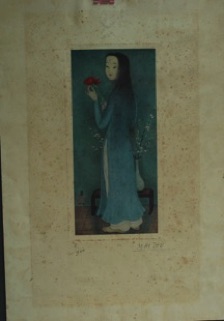
Foxing:
Brown stains, specks, spots in paper are known as ‘Foxing’. The causes of foxing are fungus as well as iron contents in paper.
Foxing is itself fungoid in nature. Fungi, however, are not necessarily visible on foxed areas, this might have occurred much earlier. The acid contents of fungus will chemically react with iron particles present in the paper and create stains. Foxed areas have higher proportion of acid and iron contents than the rest of the paper. Manufacturing defects are also
one of the reasons for foxing. It is commonly found in machine made papers, which are produced using equipment made of iron. The acids in the chemicals used for bleaching the pulps can also cause foxing.
The atmospheric pollution containing iron particles, settling on the paper can also attribute to foxing. The other significant factor is relative humidity (R.H.). Since these fungi will not develop if the R.H. falls below 65 %, it is important to maintain the RH from 45%to 65%.
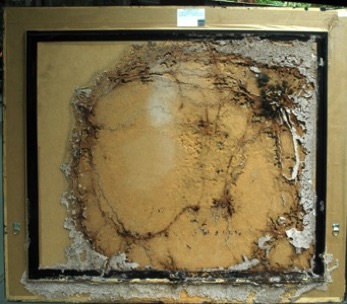
Insects:
Paper and canvas being organic substances, attract insects as food sources. High humidity, lack of light and ventilation, dust/ dirt accumulation is the ideal condition for insects to feed on artworks. The most common insects which eat paper are silverfish, wood borer, cockroach, book worm and termites. Silverfish eats only superficial layer
of a paper, cockroaches leave stains on the surface, bookworm make small holes. Termites can destroy an entire collection overnight! It leaves muddy channels along the eaten areas. Most insects are active at night. Periodical inspection, proper ventilation, sufficient lighting can keep insects away. Insect repellents can be used, but not by direct contact. Spraying or applying the repellent is not at all recommended.
Acidity:
The presence of acids in paper has been shown to contribute towards deterioration of works of art on paper and this condition is commonly known as ‘acidity’. The pH value is a measure of the strength of acidity or alkalinity of a paper. pH means the presence of free Hydrogen ions. Higher acidic contents in a paper can cause breaking of cellulose bond which results in weakened fibres and brittleness. Acidity can also darken the colour of a paper and in worst cases it can char or burn the paper.
An acid free paper may get acidity from the atmospheric pollutions dispersed through dust particles.
Atmospheric pollution containing high acidic substances such as Sulfur Dioxide can increase the acid level of a paper.
Acidic framing materials such as, acidic backing board, acidic hinging tapes and adhesives can also introduce or increase acidity in a paper. Fungi or mould growth also increase acidity in a paper.
Internal cause of acidity is inferior quality raw materials used in paper making process.
Acidic Chemicals used in the paper making process can also attribute acidity to a paper.
Use of acidic ink or colour on paper certainly contribute acidity to a paper, some examples are iron gall ink and verdigris green pigments which are highly acidic in nature.
Handling & Display:
Handling of an art work is very important. Careless handling can lead to several physical damages. All the care possible should be taken while handling a delicate art work. The use of cotton gloves is important, because our fingers contain greasy substances and if we touch the artwork directly it can create oily stains or introduce acidity to the paper. A supporting board should be used while carrying delicate artworks. While transporting an artwork, several other handling measures like, proper packing and preparing custom made cartridges are essential.
Proper display and storage are very effective steps in preventive conservation. While displaying an artwork care should be taken to maintain a slight gap between the artwork and the wall for air circulation
Storage:
To save artworks from physical damage, it is important that the system of storage of each type of artwork should be designed in such a manner that they do not exert pressure on each other. In storage, artwork should also be easily retrievable. While storing unframed art works it is essential to have proper sized boxes made of acid free materials.
Conservation framing - Please refer the conservation framing section
Before attempting an unknown treatment yourself, consulting professional conservators in time could be a preventive measure in itself.

